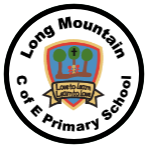English
How do we teach reading?
Our Reading Mission: we want every child to become a confident reader and to enjoy reading.
The reading curriculum begins in our pre-school where children are exposed to a huge range of stories, books, rhymes and songs. Children are given the opportunity to revisit favourite books as many times as they want! Re-reading favourite stories is a wonderful way to build a deep love of stories and to develop confidence in story language.
Phonics
Children are taught to read words through the careful, systematic teaching of phonics. At Long Moutain we follow 'Phonics Shed' which provides the structure and progression of our phonics programme. Children have daily phonics sessions in EYFS and KS1, with emphasis being placed on the application of phonic knowledge to support reading and spelling. Careful planning ensures excellent progression through the phonics phases. By learning the sounds (phonemes) that written letters (graphemes) represent, children can swiftly learn to decode words to read them. They are taught to blend phonemes together e.g. to know that t-a-p blends to make the word tap.
Reading books are carefully matched to the phonics that children are confident with. Children are not given reading books to read by themselves until they have the phonic skills needed to decode the words in that book. However, children are encouraged to choose 'sharing' books - books which families can share at home (an older sibling, parent or grandparent reading to a young child, for example).
Accelerated Reader
As children move through school, they will begin to use a resource called Accelerated Reader. AR (Accelerated Reader) enables children to take quizzes about books they have read. It also enables children to choose from a selection of books which are carefully matched to their ability. Children complete a 'Star Reader' quiz (online) and this gives them a ZPD (zone of proximal development). Their ZPD is used to find books which will help them make rapid progress as readers (just enough challenge to move them on).
Individual Reading Time
Children at Long Mountain have regular times in the week where they read. They will have opportunities to read by themselves, to read to a range of adults (including their class teacher) and to share books with classmates.
Taught Reading Lessons
In addition to individual reading opportunities, we teach whole class reading lessons. During these lessons, children are taught to read challenging texts with good intonation (tone of voice) and understanding. We use a variety of texts: poems, adverts, newspaper articles, whole books, extracts, plays, graphic novels, non-fiction books, letters and diary entries.
Reading for Pleasure
We are building a culture where reading for pleasure is celebrated and nurtured. We do this in lots of different ways:
1. Developing a lovely library space, filled with beautiful books!
2. Bringing in authors and illustrators as visitors and through virtual events.
3. Sharing class books as part of our daily routines.
4. Having a team of staff who read and share their love of reading with the children.
5. Collaborating with skilled book sellers and our local library to enhance our reading knowledge and resources.
Reading for Empathy
Reading is one of the simplest and most powerful ways to build empathy. When we read, we walk in another person's shoes and see the world through another person's eyes. This is an enormously important life skill and great books help us develop this skill with our children. Our school participates in Empathy Day.
Please do have a look at the Empathy Lab for excellent suggestions on brilliant books to share with children.
Writing
Writing is a complex task that involves a huge range of skills:
- handwriting
- spelling
- knowledge of punctuation and grammar
- planning and imagination
- oral communication
- editing
From the earliest mark making in our pre-school and Reception class right through to year 6 who write extended stories and reports, we teach our children to become confident, independent communicators and writers. We work from high quality texts to provide excellent stimulation and to model the best examples of professional writing. Children are given multiple opportunities to work with their class teacher on whole class modelled writing before moving on to write with greater independence.
We use a resource called Literacy Tree to support our English planning.
Please see the attachments below to see the overview for each class.

